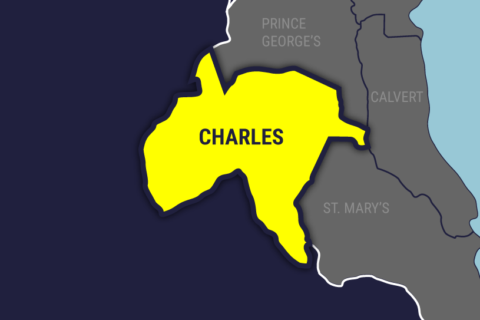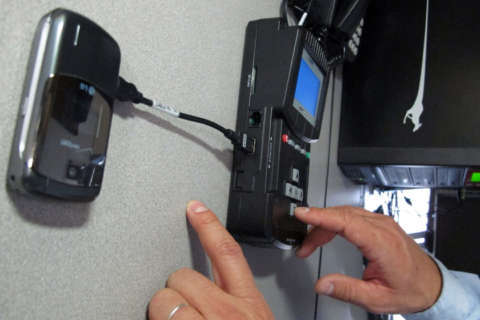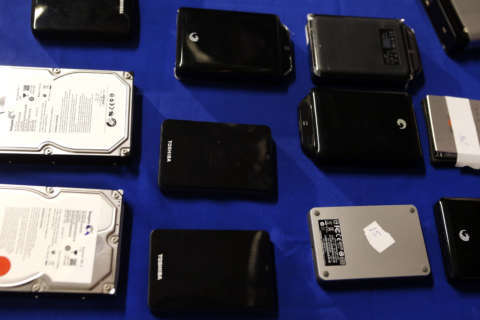WASHINGTON — In Maryland, 17 people stand between a tidal wave of cellphone and computer evidence and the few bytes of data needed to help put criminals behind bars.
The limited manpower and the small number of police departments capable of processing digital evidence is contributing to monthslong backlogs for some agencies and is slowing down investigations for others.
That’s led to real consequences for some Charles County families.
Three children were sexually exploited and a fourth was solicited by a Waldorf man between December and June — while evidence that ultimately led to Carlos Bell’s arrest sat waiting for months for a detective to examine.
Investigators eventually found videos and images of the former teaching assistant sexually abusing and even assaulting children.
In total, investigators have identified 24 children abused or exploited by Bell, who now faces more than 100 charges including sex offenses, creating child pornography, solicitation and transmission of HIV, according to court records.
The abuse spanned more than two years, beginning in March 2015.
“Any time a child is victimized in any capacity — that is a failure,” said Mike Bellis, executive director of the United Way of Charles County, who said he was shocked by the Bell case. “It is an opportunity to say how could we have prevented this; how could we adjust how we’re doing business to make sure this never happens again to any child in any circumstance.”
Police departments nationwide are struggling to adjust to the digital revolution that’s put smartphones along with their built-in cameras, banking tools and GPS, in the hands of most Americans. As a result, the volume of data police routinely collect as evidence has exploded — overwhelming the small units tasked with analyzing the files.
“What we need is for law enforcement across the board to recognize that they need to be involved in this process,” said Greg Shipley, spokesman for the Maryland State Police, about analyzing digital evidence. “We work to accommodate anyone who is making a request of us. But this cannot just be assigned to the Maryland State Police alone.”
Howard County, for example, has sent a staff person to work with the state police’s lab. Other departments could do the same, Shipley said.
While the state police serves as the primary crime lab for the majority of the counties in the state, WTOP has identified five other police departments in Maryland that have specialized units charged with examining digital evidence.
On average, these labs have three analysts who are responsible for combing through a defendant’s computers and cellphones for location data, texts, chats, deleted files plus videos and photos for cases that range from car crashes to murder to fraud.
Prince George’s County has the smallest unit, with just one examiner after three others retired or receive a promotion.
Montgomery County has the most examiners available in the state, with five analysts in the unit and four other staff members available to help as needed. Anne Arundel County’s lab has two detectives handling such evidence.
In Baltimore County, three analysts examine such evidence. And Baltimore City has two detectives assigned to examine computers and cellphones. Both departments have backlogs of about 60 cases.
In comparison to the Maryland State Police’s four analysts, the computer crime lab run by the Virginia State Police reports that it has twice as many examiners serving a state with a population that is about a 25 percent larger than Maryland’s.
“We must help the Maryland State Police and our own local police officers to increase the funding and opportunities for them to address the backlog,” said Del. Edith Patterson, who represents Charles County.
Sean Goodison authored a national report on digital evidence and found that the model of larger police departments providing evidence expertise and handling the work for smaller departments isn’t sustainable. The smaller agencies need to begin shouldering more of the workload, he said.
“They are facing this tidal wave, and it keeps changing direction because as technology changes … we have to adopt, we have to turn,” said Goodison, deputy director with the Police Executive Research Forum based in D.C.








